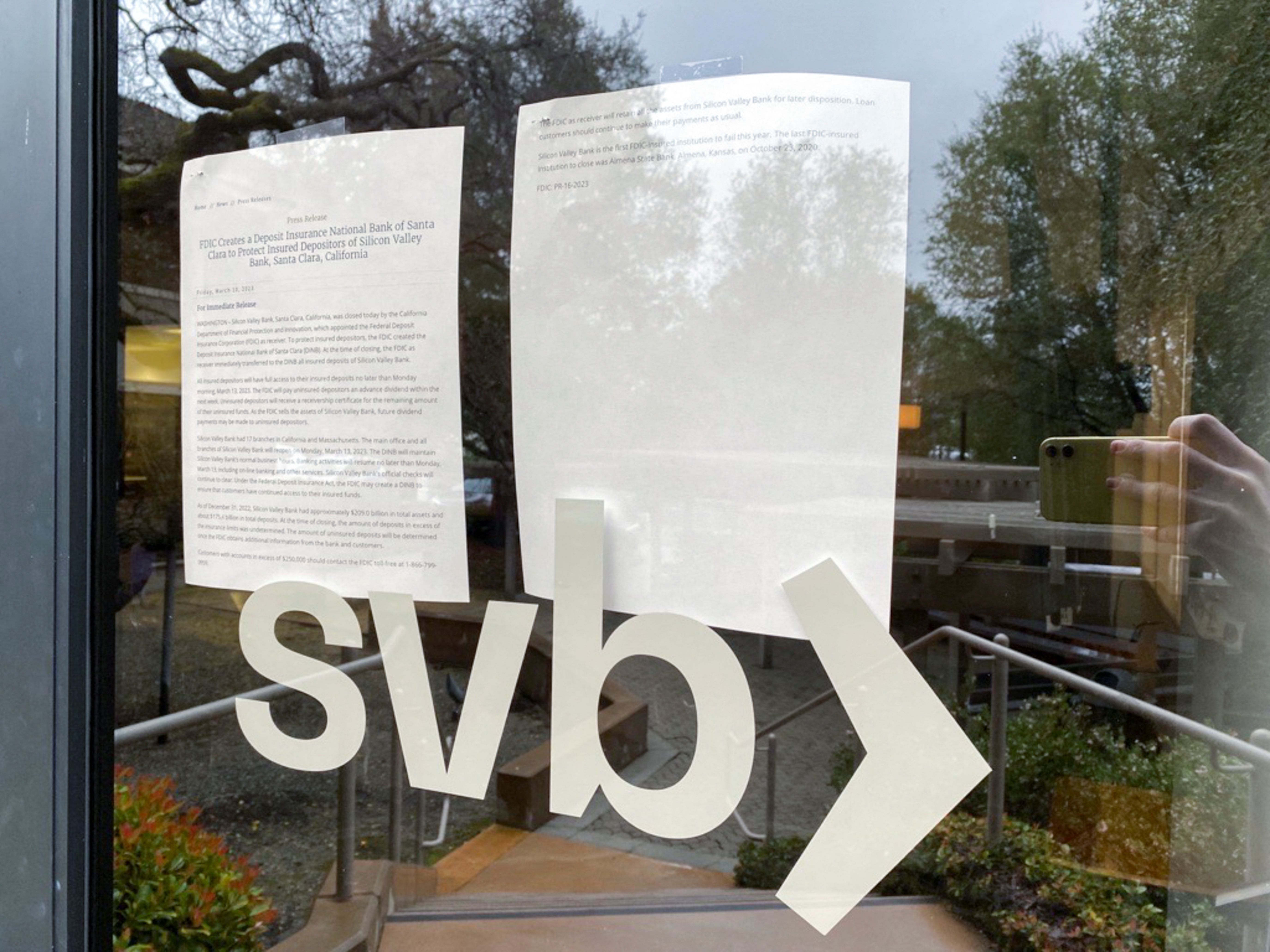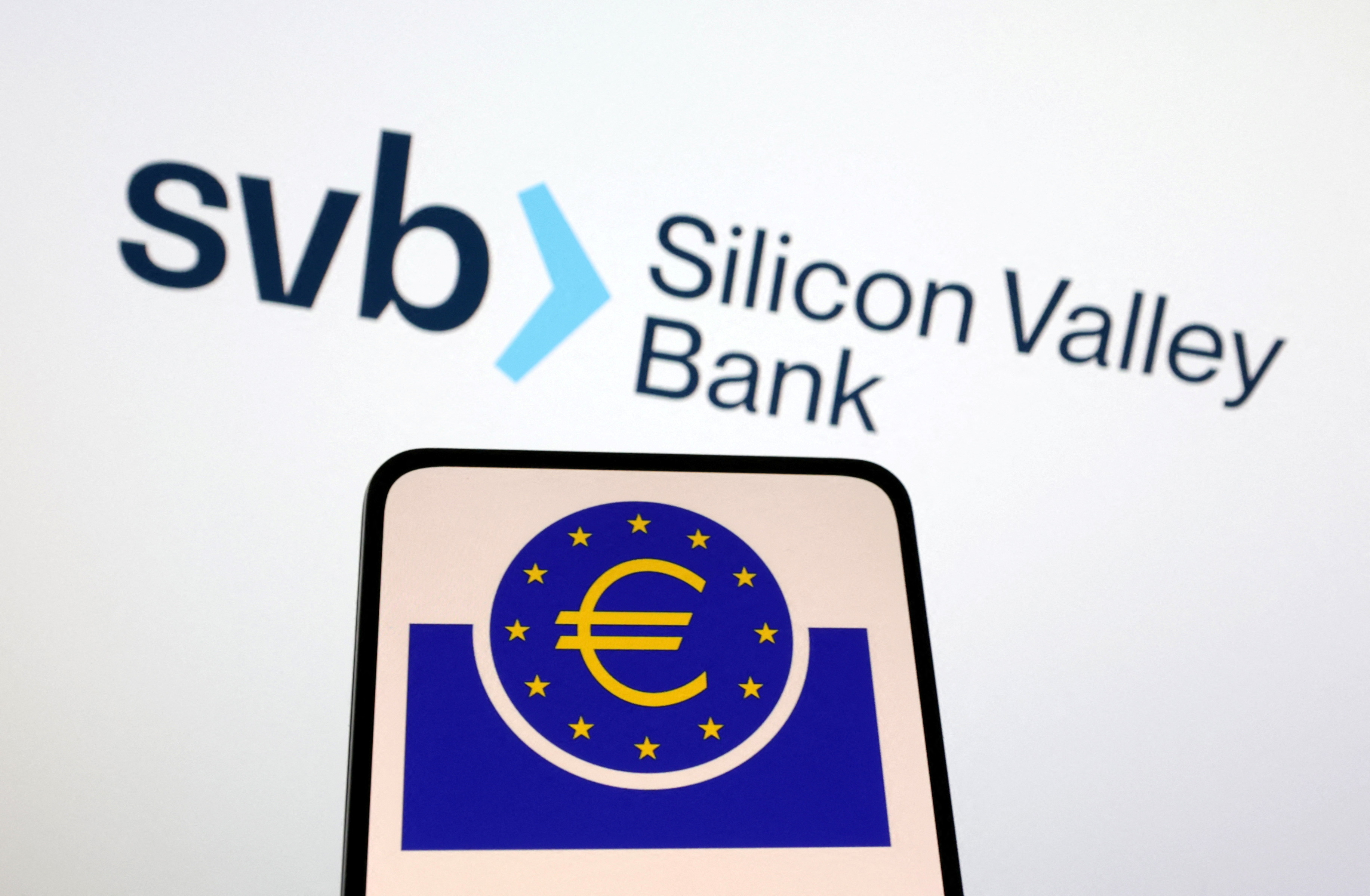Summary
- California regulator shuts down SVB, appoints FDIC as receiver
- SVB focused on lending to start-ups; branches to reopen Monday
- FDIC to dispose of bank assets; ‘chaos’ reported amid withdrawals
- Bank shares tumble in U.S., Europe, but well off lows
- Crisis uncovers banking ‘vulnerabilities’ amid rising rates
Startup-focused lender SVB Financial Group (SIVB.O) became the biggest bank to fail since the 2008 financial crisis on Friday, in an abrupt collapse that rattled global markets, left billions of dollars belonging to investors and companies stranded.

California banking regulators shut down the bank, which operated as Silicon Valley Bank, on Friday and named the Federal Deposit Insurance Corporation (FDIC) as receiver for later disposition of its assets.
Based in Santa Clara, the bank was ranked as the 16th largest in the U.S. at the end of 2022, with about $209 billion in assets. Specifics of the tech-focused bank’s sudden collapse were a jumble, but the Fed’s aggressive interest rate rises in the previous year, which had crimped financial conditions in the start-up space in which it was a significant player, seemed front and center.
As it attempted to raise capital to make up for fleeing deposits, the bank lost $1.8 billion on Treasury bonds whose values were destroyed by the Fed rate increases.
Silicon Valley Bank’s failure is the biggest since Washington Mutual collapsed in 2008, a hallmark event that sparked a financial crisis that stymied the economy for years. The 2008 crash led to stricter rules in the United States and beyond.
Since then, regulators have introduced more stringent capital requirements for U.S. banks aimed at ensuring individual bank collapses won’t hurt the wider financial system and economy.
The main office and all branches of Silicon Valley Bank will resume operation on March 13 and all insured depositors will have complete access to their insured deposits no later than Monday morning, the FDIC said.
But 89% of the bank’s $175 billion in deposits were uninsured as of the end of last year, according to the FDIC, and their fate remains to be decided.
The FDIC is hurrying to find another bank over the weekend that is ready to merge with Silicon Valley Bank, according to people with knowledge of the matter who requested to remain anonymous because the details are confidential. While the FDIC hopes to put together such a merger by Monday to protect unsecured deposits, no deal is certain, the sources added.
An FDIC spokesperson failed to immediately reply to a request for comment.
Buyers Sought
Separately, SVB Financial, the parent company of Silicon Valley Bank, is partnering with investment bank Centerview Partners and law firm Sullivan & Cromwell to obtain buyers for its other assets, which include investment bank SVB Securities, equity research firm MoffettNathanson, and wealth manager Boston Private, the sources said. These assets could attract rivals and private equity companies, the sources added.
It’s unclear if any buyer will come out to purchase these assets without SVB Financial having declared bankruptcy first. Credit ratings agency S&P Global Ratings said on Friday it anticipated SVB Financial to enter bankruptcy due to its liabilities.
SVB failed to respond to requests for comment.
Firms such as streaming device maker Roku Inc (ROKU.O) and video game maker Roblox Corp RBLX.N said they had hundreds of millions of dollars in deposits at the bank. Roku said its deposits with SVB were mostly uninsured, pushing its shares down 10% in extended trading.
Technology workers whose paychecks depended on the bank were also concerned about receiving their wages on Friday. An SVB branch in San Francisco showed a note taped to the door directing clients to call a toll-free telephone number.
SVB Financial CEO Greg Becker sent a video message to staff on Friday acknowledging the “incredibly difficult” 48 hours building up to the collapse of the bank.
The problems at SVB highlight how a campaign by the U.S. Federal Reserve and other central banks to combat inflation by ending the era of cheap money is uncovering vulnerabilities in the market. The worries battered the banking sector.
![]()
U.S. banks have shed more than $100 billion in stock market value over the past two days, with European banks shedding around another $50 billion in value, based on a Reuters calculation.
U.S. lenders Western Alliance (WAL.N) and First Republic Bank (FRC.N) said on Friday their liquidity and deposits remained robust, aiming to reassure investors as their shares tumbled. Others such as Germany’s Commerzbank (CBKG.DE) issued unusual statements to calm investors.

More Pain Coming
Some analysts predicted more pain for the sector as the episode spread concern about hidden risks in the banking sector and its vulnerability to the surging cost of money.
“There could be a bloodbath next week as…short sellers are out there and they are going to attack every single bank, especially the smaller ones,” said Christopher Whalen, chairman of Whalen Global Advisors.
U.S. Treasury Secretary Janet Yellen met banking regulators on Friday and voiced “full confidence” in their capacity to respond to the situation, Treasury said. The White House said on Friday it had faith and confidence in U.S. financial regulators, when questioned about the failure of SVB.

The source of SVB’s collapse lies in a rising interest rate environment. As higher interest rates prompted the market for initial public offerings to collapse for many startups and made private fundraising more expensive, some SVB clients began pulling money out.
To fund the redemptions, SVB sold a $21 billion bond portfolio comprising mainly of U.S. Treasuries on Wednesday, and said it would sell $2.25 billion in common equity and preferred convertible stock to fill its funding hole.
By Friday, the tumbling stock price had made its capital raise unsustainable and sources said the bank tried to consider other options, including a sale, until regulators intervened and closed the bank. The last FDIC-insured institution to shut down was Almena State Bank in Kansas, on Oct. 23, 2020.








